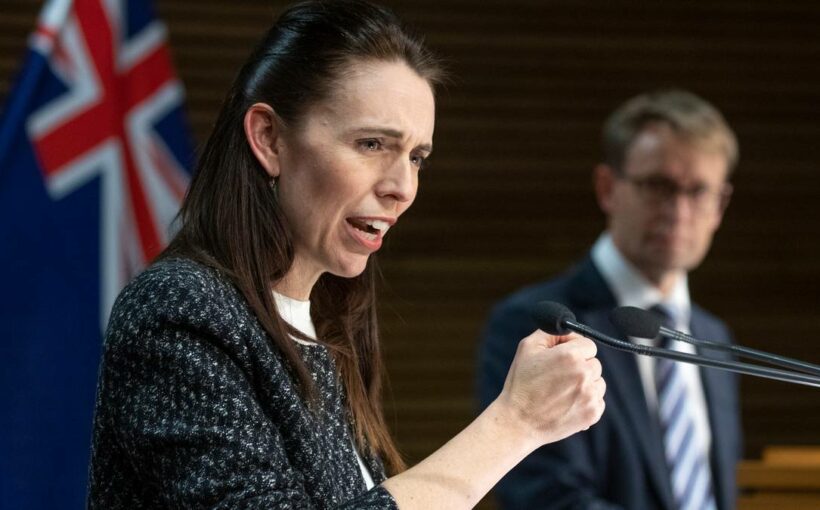A road map showing increasing freedoms for Auckland in the coming weeks has disappointed business groups, who say it offers little clarity about when conditions will normalise.
On Monday Prime Minister Jacinda Ardern outlined a three step road map under which restrictions would be gradually eased in Auckland, starting from midnight Tuesday, when Aucklanders will be allowed to meet outside in groups of up to 10, and early childhood education can resume.
Beyond that, the road map was unclear. While Ardern signalled that in step two, retail and public spaces such as museums and libraries will reopen, followed by hospitality venues in the third step, she refused to outline a timeline or what it would take for Cabinet to approve the progression.
Brett O’Riley, chief executive of the Employers and Manufacturers Association (EMA) said the measures appeared to be designed in the absence of business input by health officials.
“The Government’s scrambling to know what to do, and while it’s great to know that 10 people can have a picnic, we’d like to know when 10 people who are fully vaccinated can go back to work,” O’Riley said.
“This looks like something that’s been driven entirely by the Ministry of Health because it shows no insight into business whatsoever. For the businesses that have gone out and had their staff vaccinated, but are still not able to operate fully under alert level 3, what’s the process for them?”
O’Riley said the Government had been dropping hints about more support for Auckland businesses for weeks, but as the lockdown dragged on, the mood was darkening.
“What we’ve seen over the last 72 hours is that businesses are getting increasingly desperate. While it’s nice to hear that the wage subsidy and the resurgence payment are extended, we all know that there are many businesses that don’t qualify for those. We’ve been hearing for seven weeks that there might be some specific assistance for Auckland businesses, but there’s nothing.”
Michael Barnett, chief executive of Auckland Business Chamber, said there was not much to digest from the announcement.
“It’s weak. The only bit of certainty is in the first phase of it. I think what you’ve got is it’s going to leave businesses desperate for revenue. Many of them burdened with debt and all of them shortchanged on financial support that’s being offered. They also continue to be burdened with uncertainty.”
Last week the chamber, along with BusinessNZ and the EMA called for changes to allow workers that had been both fully vaccinated and with a negative Covid test to move across the border. On Monday Ardern gave no outline on the border beyond that the rules would remain under review.
Barnett said this would have a massive impact on the entire New Zealand economy.
“The government has already indicated that if Auckland goes to alert level 2 it isn’t their intention to open the border. So Auckland’s going to have its own kind of iron curtain and that’s going to have a massive impact on the movement of people,” Barnett.
As well as restricting workers coming into the city or moving outside Auckland limits for their employment, the border would be destructive for New Zealand’s tourism industry.
“Aucklanders are about 25 per cent of domestic tourism so that means you’re denying the rest of New Zealand the Auckland contribution to tourism.”
Monday’s announcement was focused mainly on outlining the road map of potential future freedoms, Ardern hinted that more details would be released in the coming days, promising to “set out our plan for the final stages of our vaccination campaign” on Tuesday.
Then on Thursday there will be an update “on the testing strategy going forward”. Cabinet received a report on a “new rigorous testing regime” from Otago University’s Professor David Murdoch.
Kirk Hope, chief executive of BusinessNZ, said those updates may provide more information for business than Monday’s news.
“While that transitional information is useful I think the broader strategy that the prime minister talked about but said will be coming in the next couple of days about what a move beyond alert levels will look will be quite critical,” Hope said.
“What will the rules be when we hit 80 per cent vaccination or 90 per cent vaccination or 70 per cent vaccination, what will be able to do without restriction? What are the rules if there is an outbreak?
Hope said it would be good if the Government provided more of a leadership role around when businesses could require staff to get vaccinated.
“The Government have really shied away from mandating vaccinations except in certain circumstances but I think the Prime Minister indicated they’re going to have to look at something,” Hope said.
“A lot of businesses are really struggling with what the threshold is, what they can do. They know what their responsibilities are, but what they can and can’t do with regards to employment law and the Health and Safety at Work Act … The Government could be taking a bit more of a leadership role from that perspective.”
Source: Read Full Article
